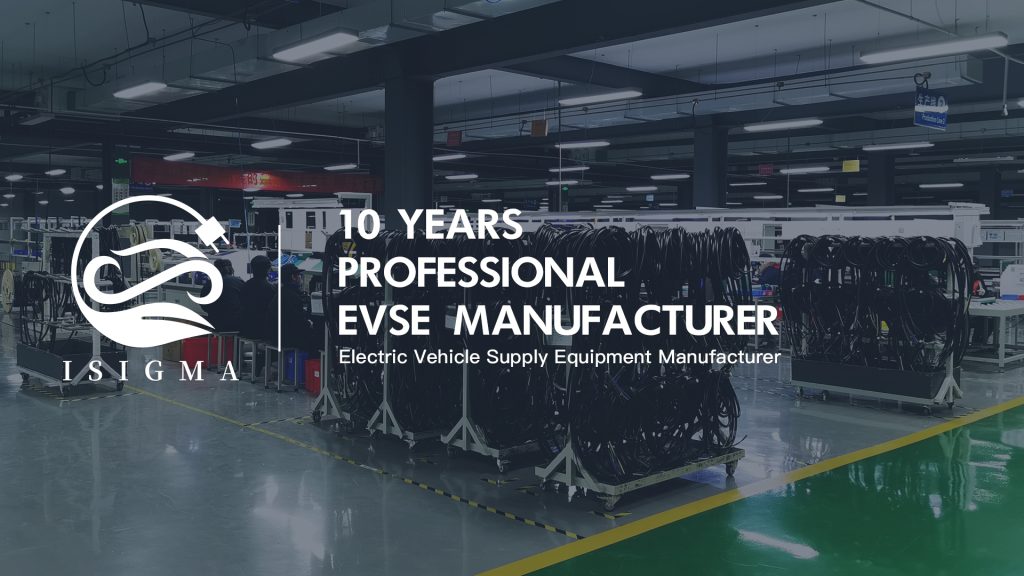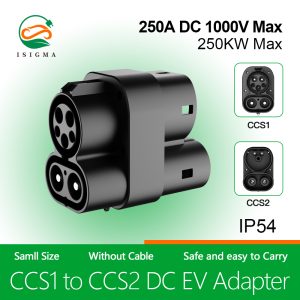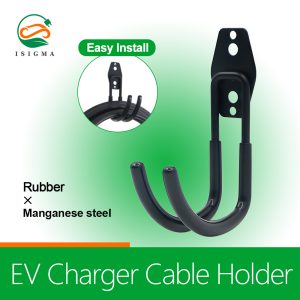Are you interested in electric vehicles (EVs) and the infrastructure that supports their charging needs? If so, you may have come across the term EVSE. In this article, we will delve into the world of EVSE, explaining what it is, its types, benefits, and its importance in the growing adoption of electric vehicles. Let's get started!
Table of Contents
- Introduction to EVSE
- Types of EVSE
- Benefits of EVSE
- EVSE Installation Process
- EVSE and Charging Standards
- The Role of EVSE in EV Adoption
- Future of EVSE
- Conclusion
- FAQs
1. Introduction to EVSE
EVSE, which stands for Electric Vehicle Supply Equipment, refers to the infrastructure that enables the charging of electric vehicles. It serves as the intermediary between the power grid and the vehicle, providing a safe and efficient way to transfer electricity. EVSE consists of various components such as cables, connectors, and control systems, which work together to facilitate the charging process.

2. Types of EVSE
There are different types of EVSE available, each catering to specific charging needs. Here are the main categories:
Level 1 EVSE
Level 1 EVSE, also known as trickle charging, is the simplest and most basic type of charging equipment. It typically operates on a standard 120-volt household outlet and offers a charging rate of about 4-5 miles of range per hour. Level 1 EVSE is commonly used in residential settings and is convenient for overnight charging.
Level 2 EVSE
Level 2 EVSE provides faster charging than Level 1 and requires a dedicated 240-volt electrical circuit. It delivers a charging rate of around 25-30 miles of range per hour, significantly reducing charging time compared to Level 1. Level 2 charging stations are commonly found in public locations, workplaces, and commercial settings.
DC Fast Charging
DC Fast Charging, also known as Level 3 charging, offers rapid charging capabilities. It utilizes direct current (DC) to charge the vehicle's battery directly, bypassing the onboard charger. DC Fast Charging stations can provide an impressive charging rate of up to 200 miles of range in just 30 minutes, making them ideal for long-distance travel and quick top-ups.
3. Benefits of EVSE
Installing and utilizing EVSE brings several benefits to electric vehicle owners and the overall electric mobility ecosystem. Some key advantages include:
- Convenience: EVSE allows for charging at home, workplaces, and public locations, offering flexibility and convenience to EV owners.
- Cost Savings: Charging at home using Level 1 or Level 2 EVSE can be more cost-effective compared to public charging stations, reducing the overall cost of vehicle ownership.
- Environmental Sustainability: EVSE supports the adoption of electric vehicles, which helps reduce greenhouse gas emissions, air pollution, and dependence on fossil fuels.
- Grid Optimization: With smart charging capabilities, EVSE can be integrated into the electrical grid, allowing for better load management, peak shaving, and overall grid stability.

4. EVSE Installation Process
Installing EVSE typically involves the following steps:
- Determine the appropriate EVSE type based on your charging needs and location.
- Ensure you have the necessary electrical capacity and infrastructure to support the chosen EVSE.
- Hire a qualified electrician to install the electrical circuit and necessary equipment.
- Choose a reputable EVSE manufacturer or supplier and purchase the charging equipment.
- Install the charging station according to the manufacturer's guidelines and local regulations.
- Perform testing and verification to ensure the EVSE operates safely and efficiently.
5. EVSE and Charging Standards
To ensure interoperability and compatibility among different electric vehicles and charging stations, various charging standards have been established. The two most prevalent standards are:
- CHAdeMO: A fast charging protocol developed by Japanese automakers, providing high-power DC Fast Charging capabilities.
- CCS (Combined Charging System): A universal charging standard supported by most European and North American automakers, combining AC and DC charging capabilities.
6. The Role of EVSE in EV Adoption
EVSE plays a crucial role in the widespread adoption of electric vehicles. Here's how:
- Range Confidence: The availability of an extensive charging infrastructure, enabled by EVSE, helps alleviate "range anxiety" and boosts consumer confidence in EVs.
- Accessibility: Publicly accessible EVSE networks and charging stations make electric vehicle ownership more viable for individuals who don't have access to home charging solutions.
- Urban Planning: EVSE integration into urban planning ensures that EV charging infrastructure keeps pace with the growing number of electric vehicles, supporting sustainable transportation initiatives.
7. Future of EVSE
The future of EVSE looks promising, with rapid advancements and innovations on the horizon. Some key areas of development include:
- Increased Charging Speed: EVSE technologies are evolving to provide even faster charging speeds, reducing charging times significantly.
- Wireless Charging: Inductive and wireless charging technologies aim to eliminate the need for physical cables and connectors, offering a seamless and effortless charging experience.
- Vehicle-to-Grid Integration: EVSE will play a vital role in bidirectional charging, enabling electric vehicles to supply power back to the grid during peak demand, contributing to grid stability.
Conclusion
In conclusion, EVSE serves as the backbone of the electric vehicle charging infrastructure, providing the means to charge electric vehicles safely and efficiently. With its various types, benefits, and continuous development, EVSE plays a crucial role in the widespread adoption of electric vehicles and the transition to a sustainable transportation system.
FAQs
- Is EVSE installation complicated? EVSE installation can vary depending on factors such as the chosen type, electrical capacity, and local regulations. It is recommended to consult a qualified electrician for a smooth installation process.
- Can I charge my electric vehicle without EVSE? While EVSE offers convenient and safe charging, some electric vehicles can be charged using a standard household outlet. However, it is important to check your vehicle's specifications and recommended charging options.
- Are there different charging connectors for EVSE? Yes, there are different charging connectors used in EVSE, depending on the charging standards and region. Common connectors include Type 1 (SAE J1772), Type 2 (Mennekes), CHAdeMO, and CCS.
- Can I use Level 2 EVSE at home? Yes, Level 2 EVSE can be installed at home, provided you have the necessary electrical capacity and infrastructure. It offers faster charging compared to Level 1, reducing charging time.
- Where can I find public EVSE stations? Public EVSE stations can be found at various locations, such as shopping malls, parking garages, hotels, and along major highways. Several online platforms and mobile apps provide maps and information about their locations.
In the ever-growing world of electric vehicles, understanding EVSE and its significance is essential. By enabling safe and convenient charging, EVSE paves the way for





